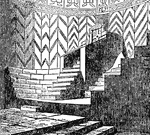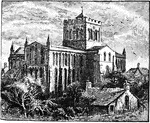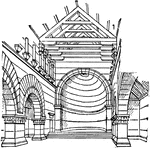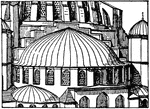Clipart tagged: ‘Apse’

Apse
"A semicircular recess usually placed at the east end of the choir or chancel of a romanesque, or what…

Apse of a Cathedral
An illustration depicting the inside of an apse. In architecture, the apse (Latin absis "arch, vault";…

Basilica
"Apse of Basilica, Torcello, with Bishop's throne and seats for clergy." — The Encyclopedia Britannica,…

Hexham Abbey
There has been a church on the site for over 1300 years since Etheldreda, Queen of Northumbria made…

Church at Kalb Louzeh
Christian architecture is Syria diverged from Roman traditions. The abundance of hard stone, the total…

Suleimanié Mosque
"Semi-dome, exterior. Apse of Suleimanié Mosque, Constantinople (A.D. 1550)." -Whitney, 1911

Suleimanié Mosque
"Semi-dome, interior. Apse of Suleimanié Mosque, Constantinople (A.D. 1550)." -Whitney, 1911

Wells Cathedral
"Plan of Wells Cathedral. A, Apse or apsis. B, Altar, altar-platform, and altar-steps. D E, Eastern…